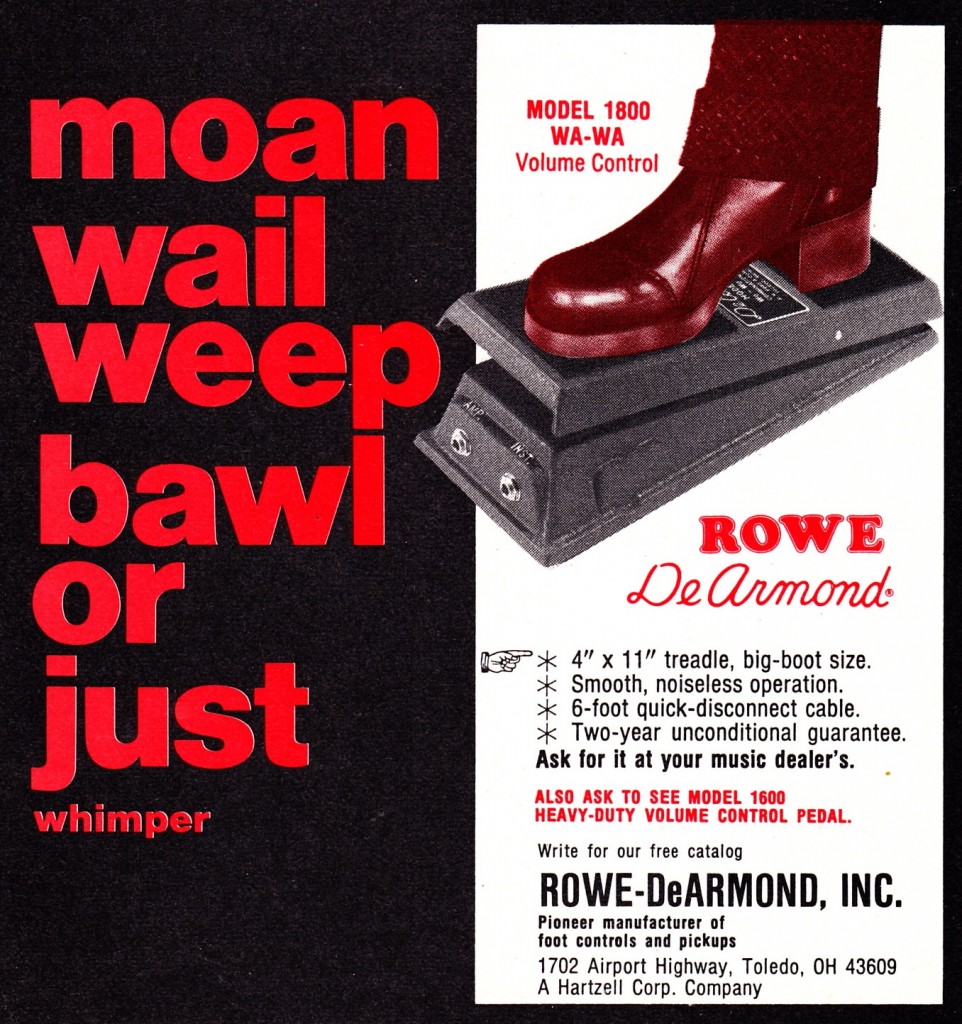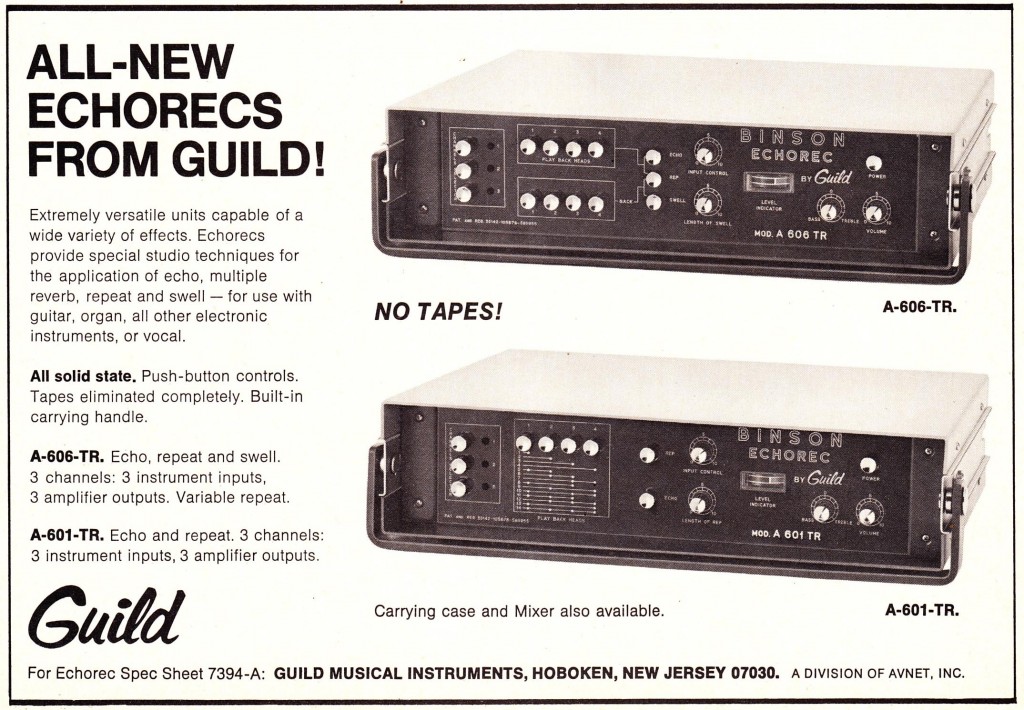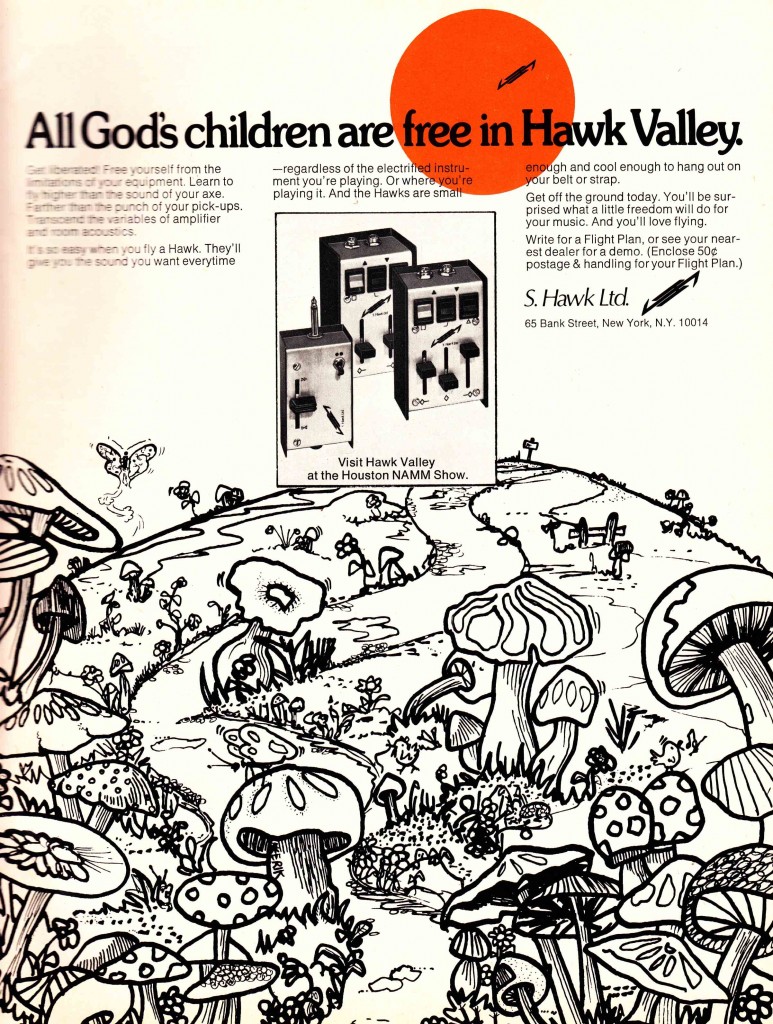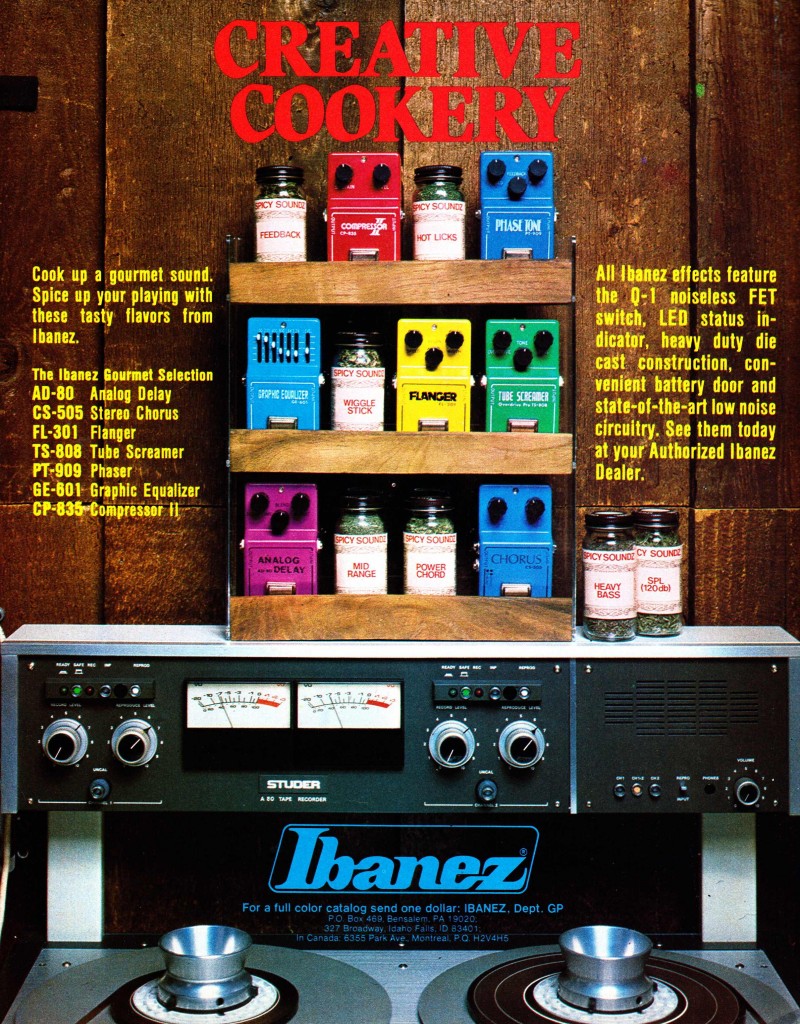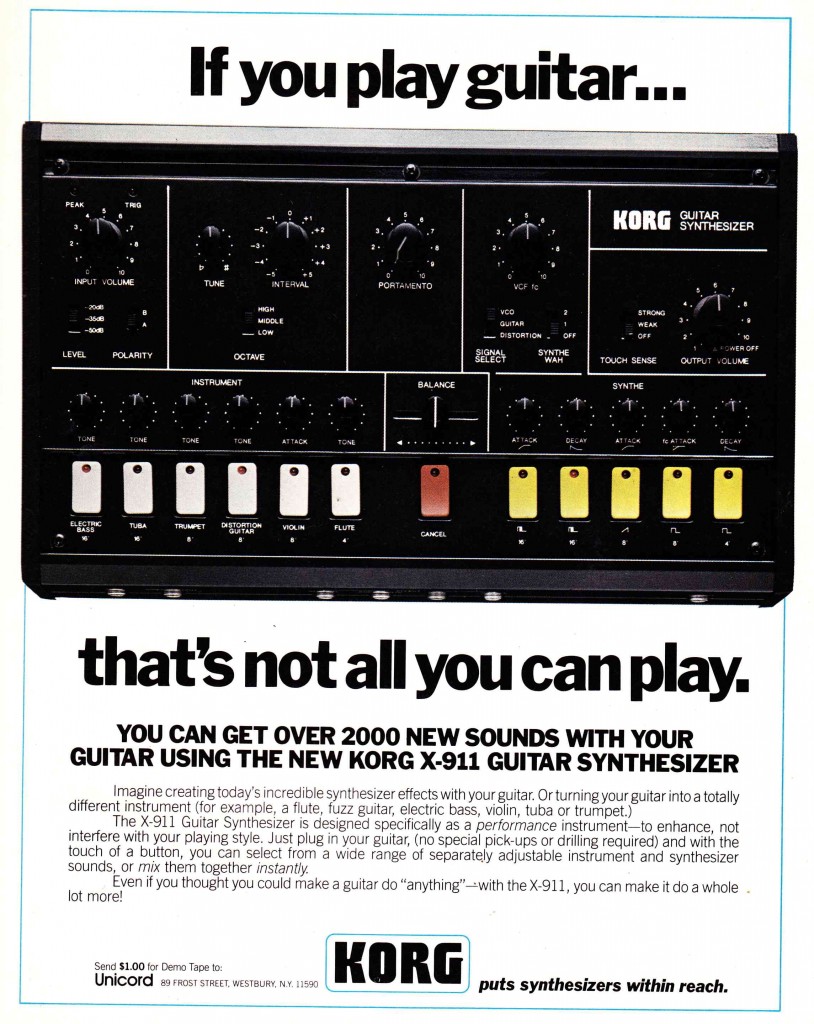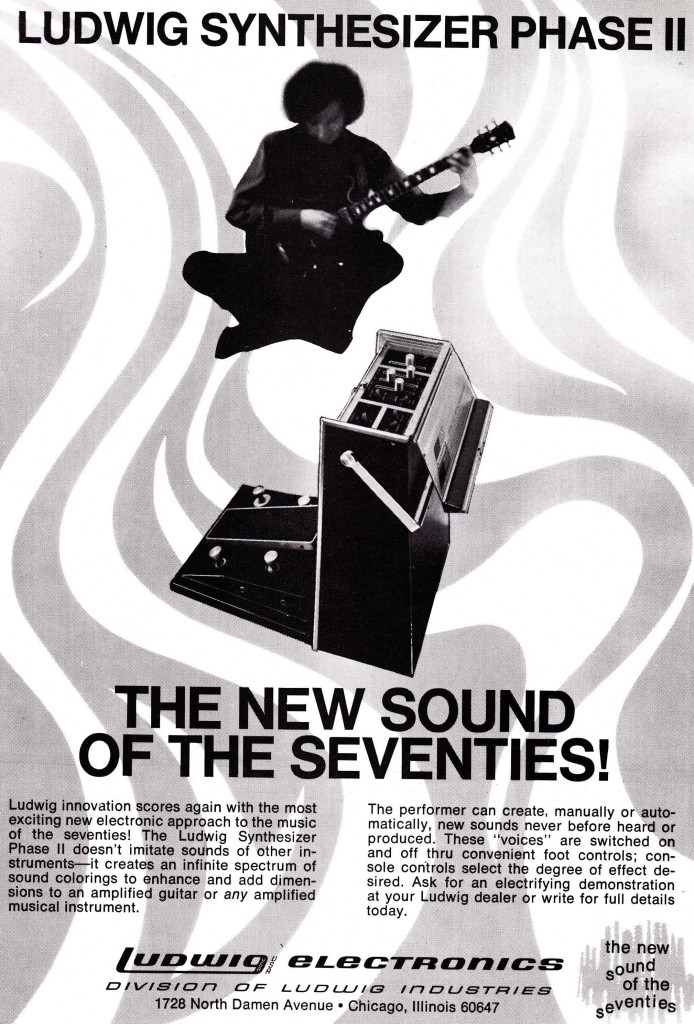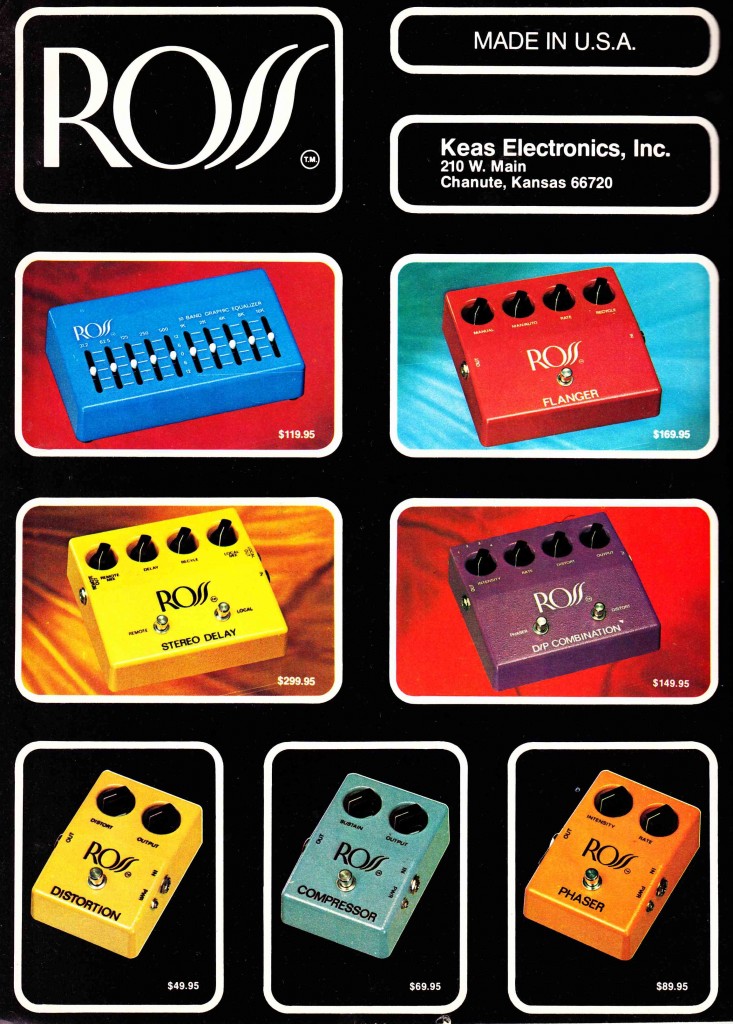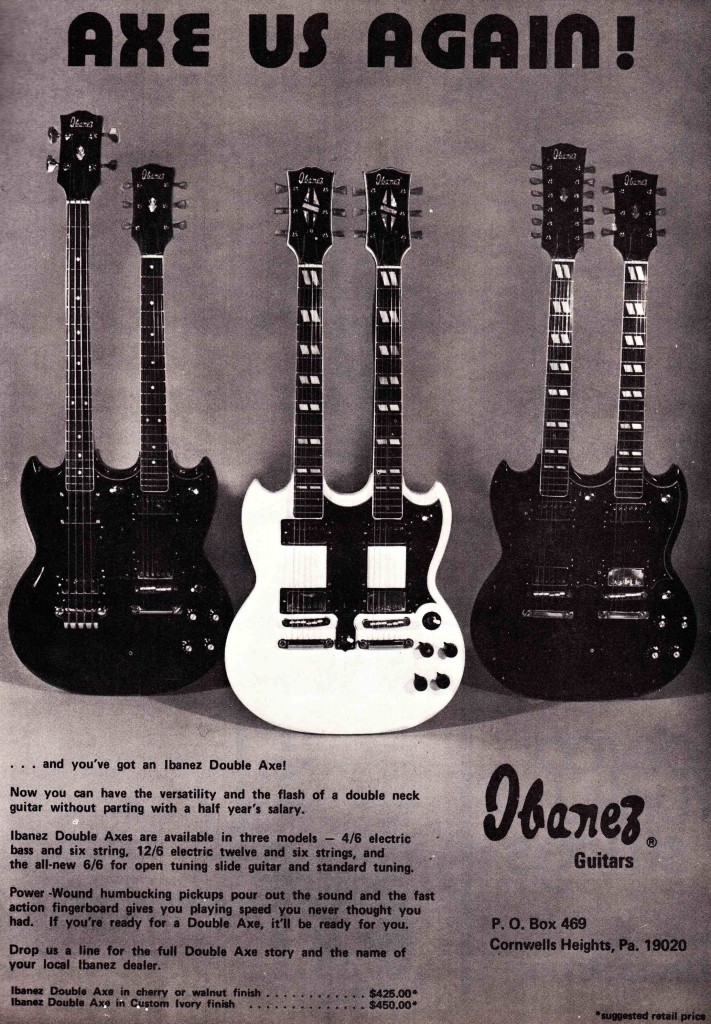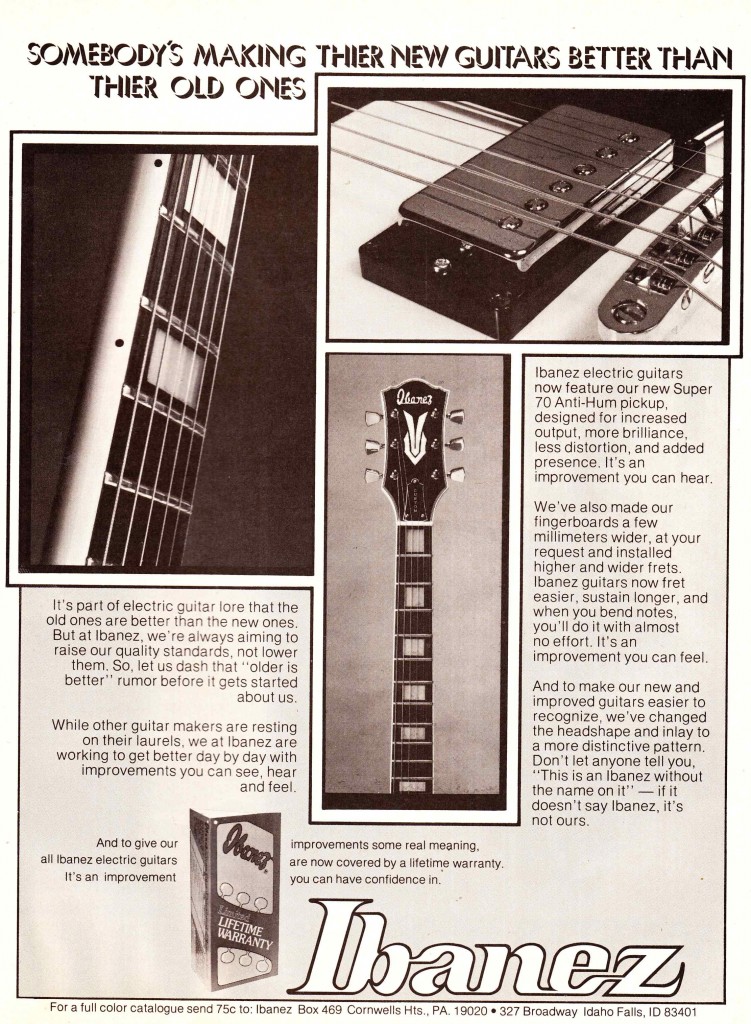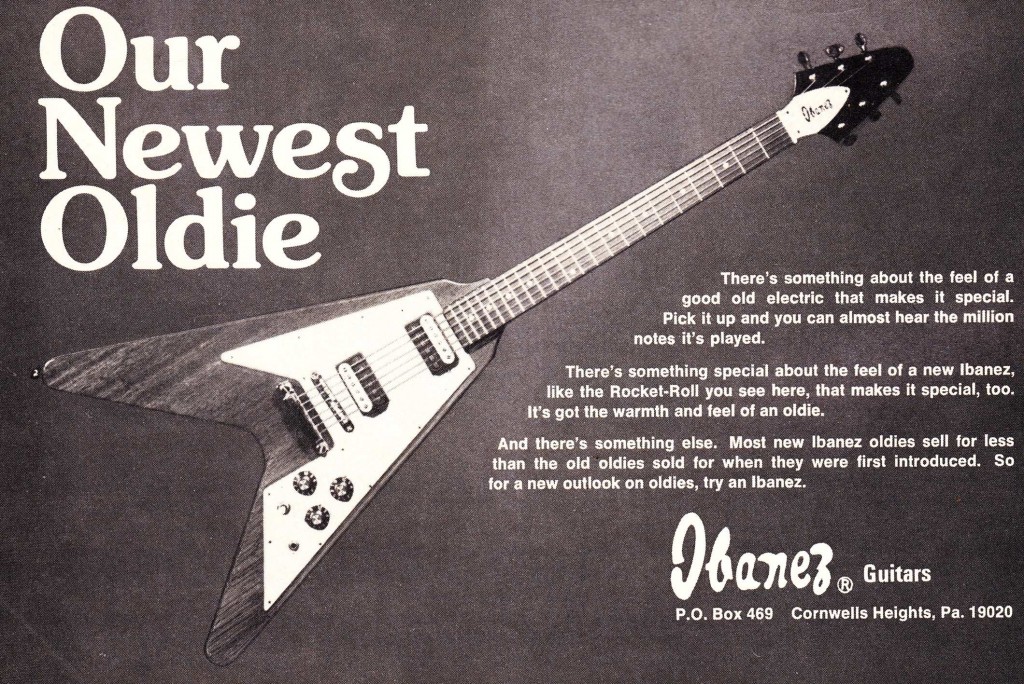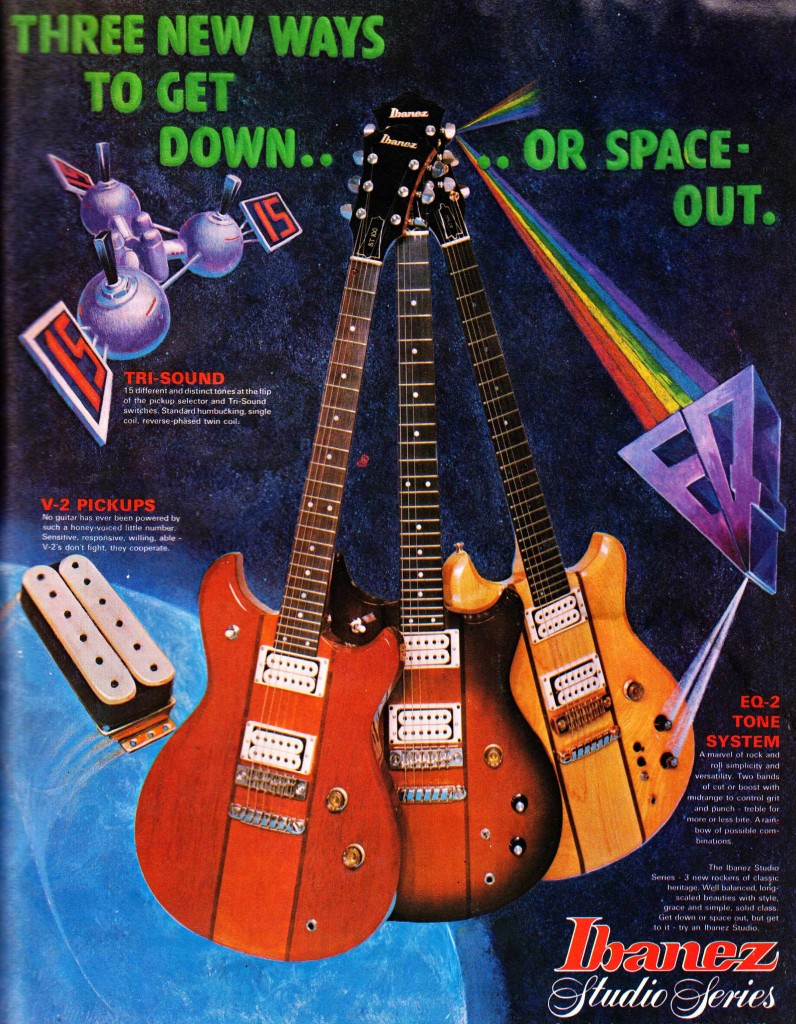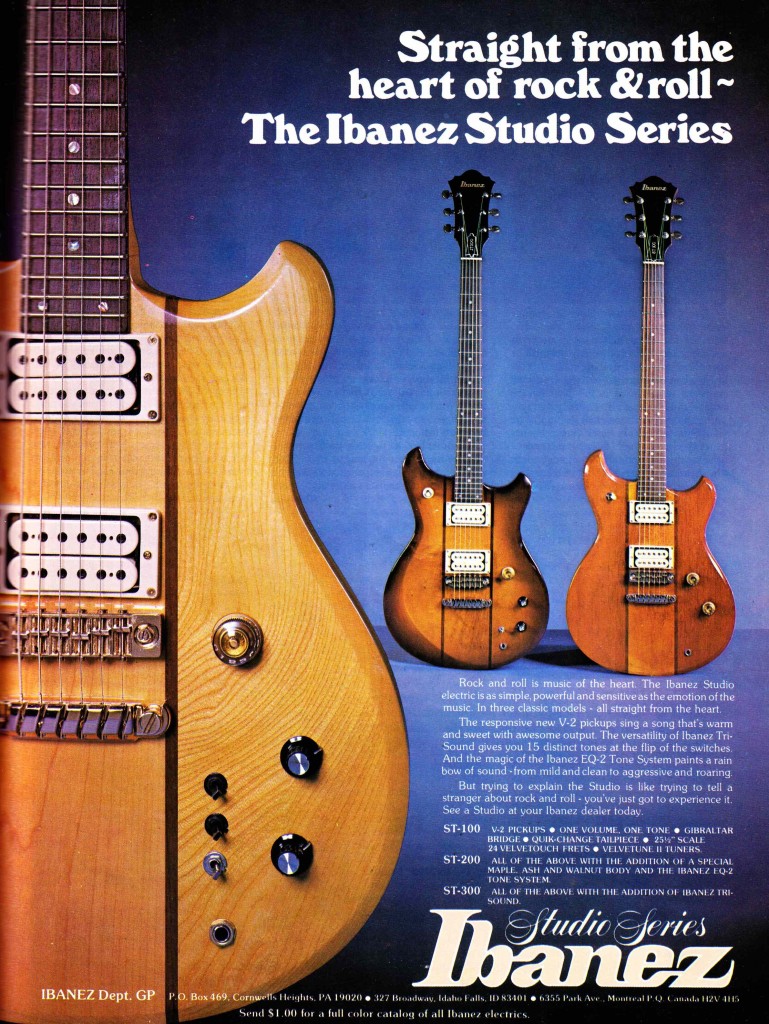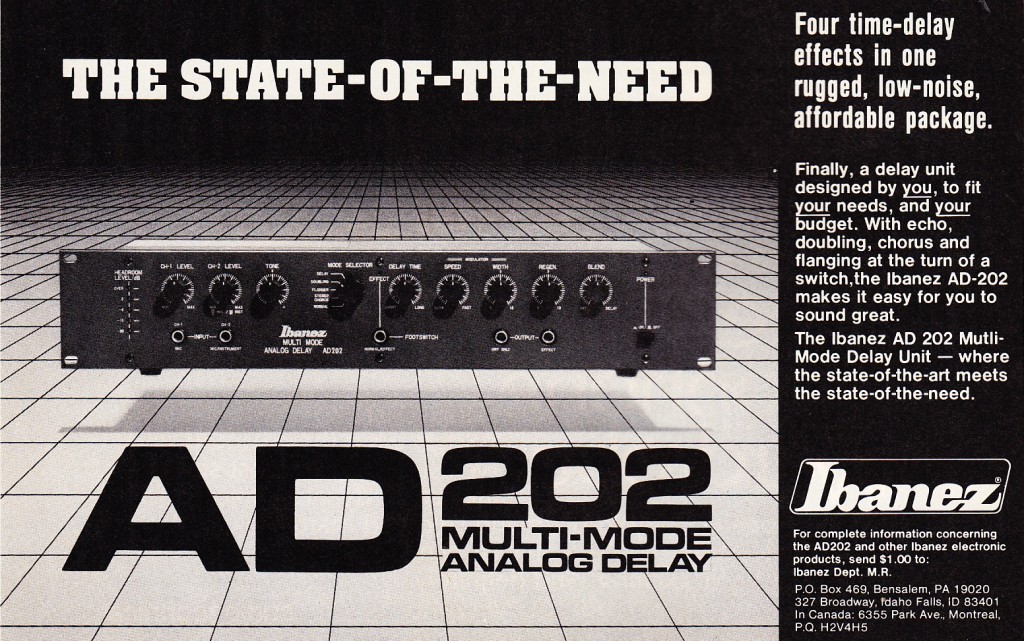 Above: the Ibanez AD202 c. 1981. A multimode analog delay with modulation section. I had one of these in maybe 1994 and it was a phenomenally great unit. What on earth did I do with it? No idea where it ended up. It had this great crunch to it when it overloaded.
Above: the Ibanez AD202 c. 1981. A multimode analog delay with modulation section. I had one of these in maybe 1994 and it was a phenomenally great unit. What on earth did I do with it? No idea where it ended up. It had this great crunch to it when it overloaded.
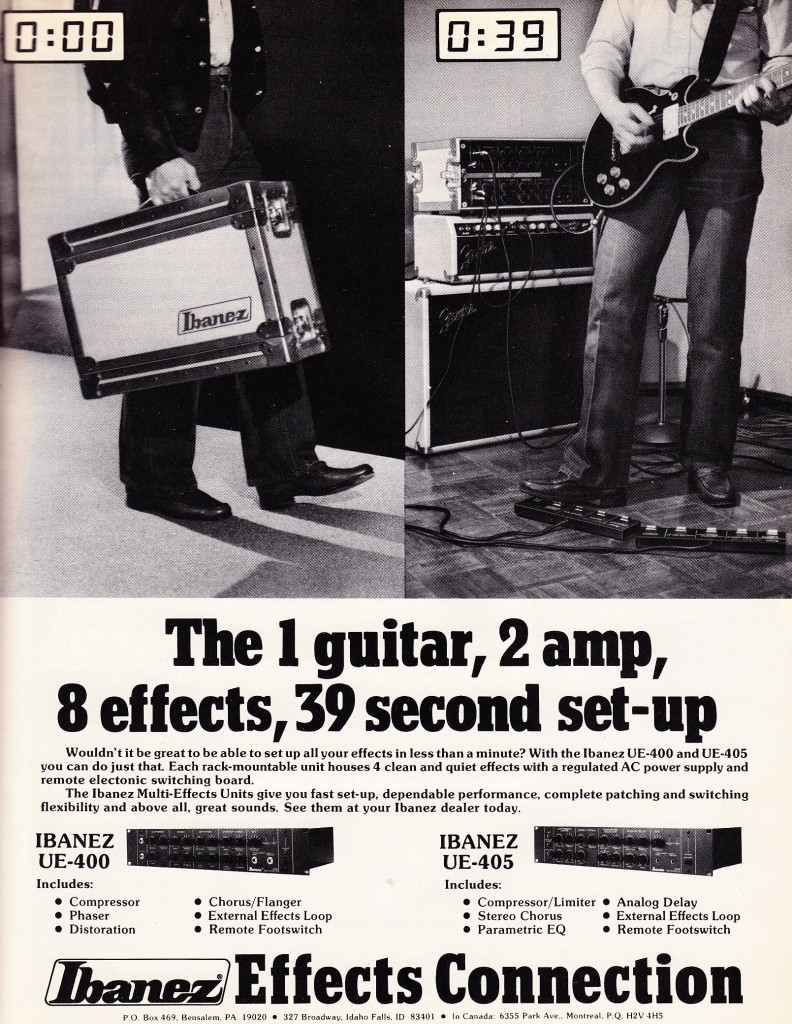 Above, the Ibanez UE-400 and and UE-405, also c. 1981: 4x analog rack-mount multi-effects units. I found a UE-405 (the one with Delay) with the pedal+ a rack case in a Minnesota Guitar Center in maybe 2003? I paid about $150. I used it on a few tracks and sold it when I moved apartments. Bad move, even at a big profit… another great unit that I wish I had kept. BTW, above, I love that dude is using his UE-40X’s with a blond Fender Bassman piggyback. Pretty good, pretty good…
Above, the Ibanez UE-400 and and UE-405, also c. 1981: 4x analog rack-mount multi-effects units. I found a UE-405 (the one with Delay) with the pedal+ a rack case in a Minnesota Guitar Center in maybe 2003? I paid about $150. I used it on a few tracks and sold it when I moved apartments. Bad move, even at a big profit… another great unit that I wish I had kept. BTW, above, I love that dude is using his UE-40X’s with a blond Fender Bassman piggyback. Pretty good, pretty good…
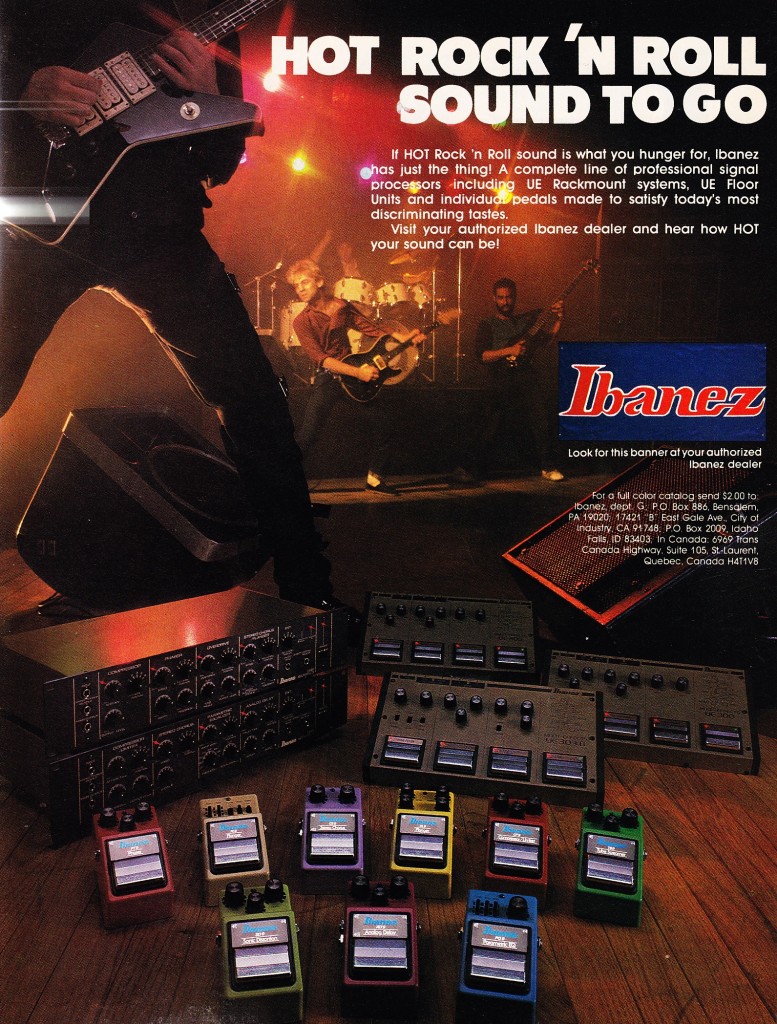 Above: the complete Ibanez FX lineup of 1984, right before the transitioned to the single-rackspace digital units. I recently found the ‘bass’ pedal-board unit (compressor, flanger, and envelope filter) for $60 at the flea market. Which seemed expensive, but I was given many assurances. Dude totally ripped me off! It had some weird distortion issue that I could not easily diagnose. To the transfer station with that one. Caveat emptor…
Above: the complete Ibanez FX lineup of 1984, right before the transitioned to the single-rackspace digital units. I recently found the ‘bass’ pedal-board unit (compressor, flanger, and envelope filter) for $60 at the flea market. Which seemed expensive, but I was given many assurances. Dude totally ripped me off! It had some weird distortion issue that I could not easily diagnose. To the transfer station with that one. Caveat emptor…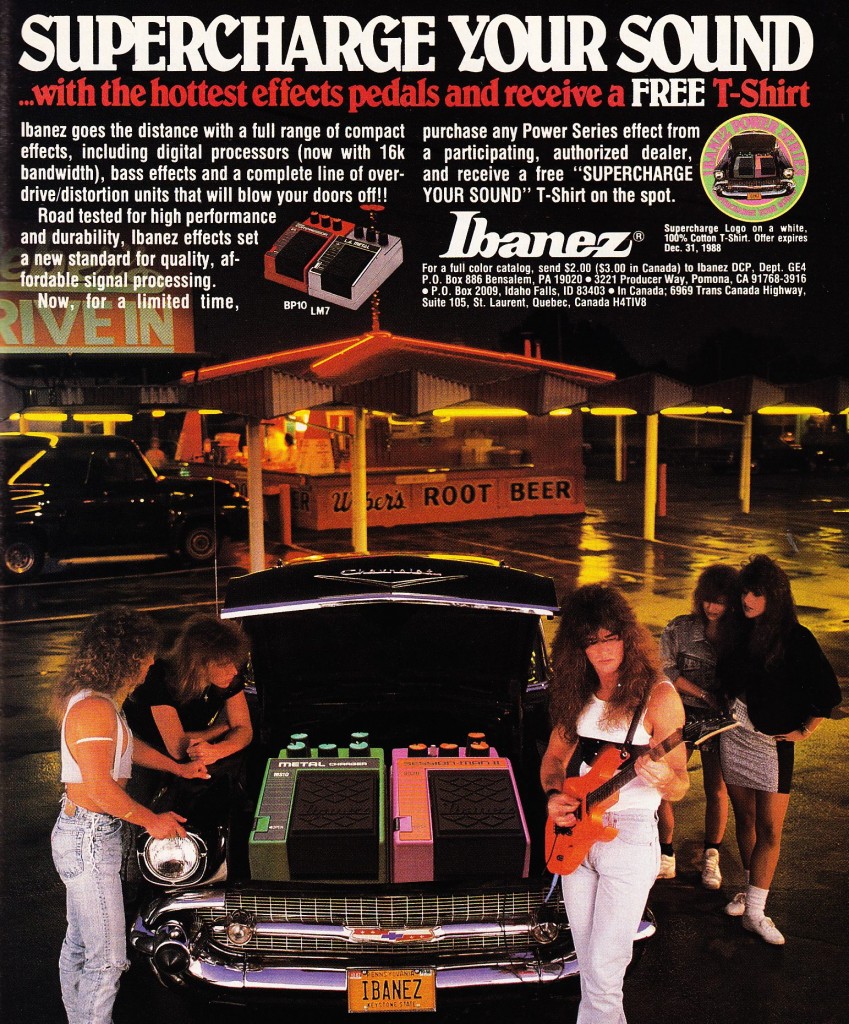 Above, an ad for root beer, bad denim, and hairspray c. 1988. I think they lost my interest by this point.
Above, an ad for root beer, bad denim, and hairspray c. 1988. I think they lost my interest by this point.
